Converting your lawn to be organic has several potential benefits, both for the health of your yard and the overall environment. Synthetic lawn care products can negatively impact the environment, including contaminating water sources and harming beneficial insects and other wildlife. They can also cause harm to human health, with many commonly used lawn pesticides linked with cancer and hormonal and reproductive issues.
Organic lawns can support a greater plant and animal life diversity, including pollinators like bees and other beneficial insects. This can help to create a more resilient and sustainable ecosystem in your yard. It’s not too difficult to convert your lawn to becoming organic. While organic lawn care products may initially be more expensive than synthetic alternatives, they can be more cost-effective in the long run. By improving soil health and creating a healthier, more resilient lawn, you may be able to reduce your overall lawn maintenance costs over time. If you start today, your lawn can be on its way to being organic in just a few weeks.
1. Test your soil before you get started
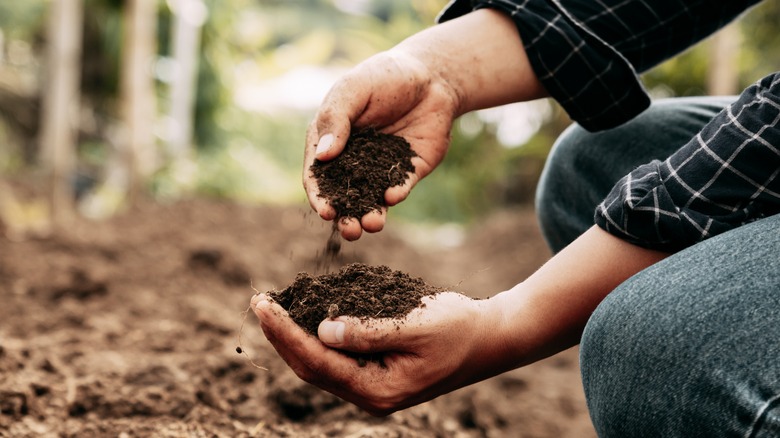
Testing soil is an important step in creating an organic garden because it allows you to assess its nutrient content and pH level. By knowing these soil characteristics, you can make informed decisions about what types of organic fertilizers and amendments you need to ensure your plants have the necessary nutrients to grow and thrive. If you begin making changes without knowing your yard’s baseline, it can harm your lawn in the long run. You don’t want to adjust in the wrong direction, even if you use natural fertilizers such as compost, manure, and worm castings. Using the wrong amount won’t improve the soil’s fertility and structure over time.
In addition to testing the soil’s nutrient content, you should also test the pH level, which measures the soil’s acidity or alkalinity. Most plants prefer a slightly acidic soil pH of around 6.0 to 6.5, but some may prefer a more alkaline or acidic environment. By knowing your soil’s pH level, you can make adjustments using natural methods, such as adding lime to increase alkalinity or sulfur to increase acidity. This way, your plants will continue to thrive, but you won’t use inorganic substances. Overall, testing the soil is a crucial step in creating an organic garden because it helps you understand its unique characteristics and make informed decisions about how to improve it naturally.
2. Stop using synthetic fertilizers and pesticides
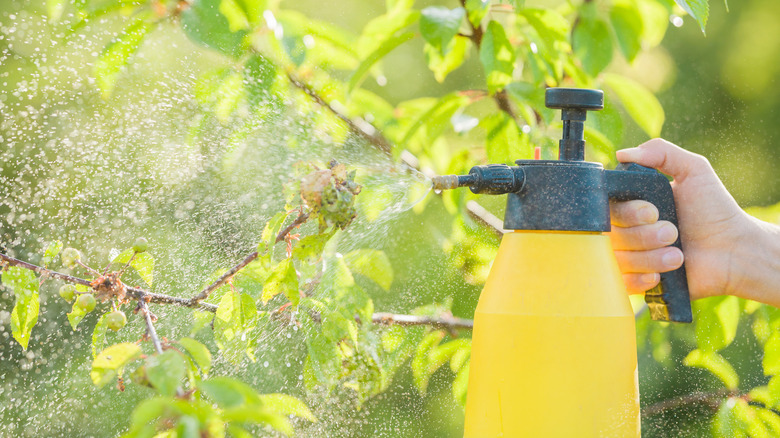
Synthetic fertilizers and pesticides are non-organic because they are manufactured artificially using chemical processes. Synthetic fertilizers are typically made from petroleum or natural gas and are designed to boost nutrients quickly to plants. Synthetic pesticides, on the other hand, are designed to kill or repel pests using chemicals. In both cases, these chemicals can harm the environment and accumulate in the soil and water over time. In addition, these manufactured chemicals can also harm beneficial insects, birds, and other wildlife, as well as pollute waterways and damage ecosystems.
If you want your lawn to be organic, you should switch to organic fertilizers and pest control methods instead. Organic fertilizers like compost and worm castings will help improve soil health and encourage healthy plant growth, while organic pest control methods like companion planting and natural predators will help control pests without harming the environment. Choosing to be more organic in how you nurture your lawn will also positively affect your gardens and flower beds since they won’t be exposed to chemicals. When disposing of the substances you no longer plan to use, please do so responsibly. Throwing them away or pouring them down the drain can do just as much damage as using them in your yard.
3. Start using organic herbicides
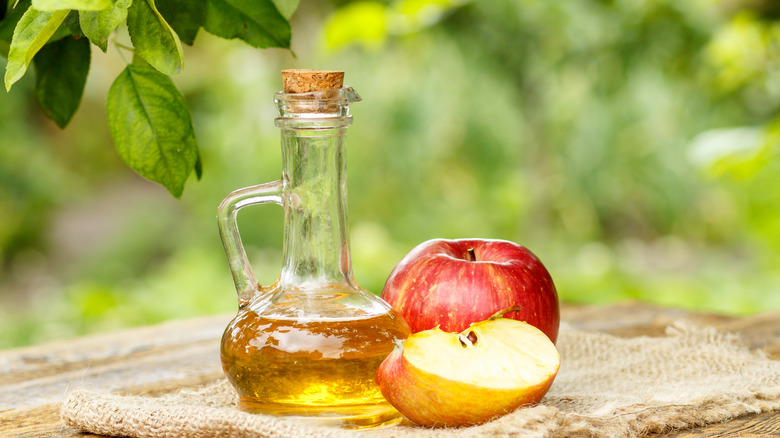
Vitalii Marchenko/Getty Images
Once you remove synthetic options from the mix, it’s time to go natural. Organic herbicides are products that are used to control weeds naturally and sustainably without the use of synthetic chemicals. Vinegar is one of our favorite examples of an organic option. It can be used to kill weeds by spraying it directly onto the leaves. The acetic acid in vinegar causes the plant to dry out and die. Citrus oil is another natural herbicide that can be used to control weeds. It works by breaking down the waxy coating on the leaves, causing them also to dry out and die without too much effort on your part. Other oil options include clove oil, peppermint oil, and cinnamon oil. They can be used to control weeds by disrupting the plant’s cell membranes and causing them to dry out.
Organic herbicides are generally considered safer for the environment than synthetic herbicides, as they are biodegradable and do not leave harmful residues in the soil. However, it’s important to note that organic herbicides may not be as effective as synthetic herbicides and may need to be applied more frequently to achieve the desired results. If you have the time, the organic way is still definitely worth it. Additionally, for the best results, it’s important to follow the instructions on the label carefully and use organic herbicides safely and responsibly.
4. Add organic matter to your lawn
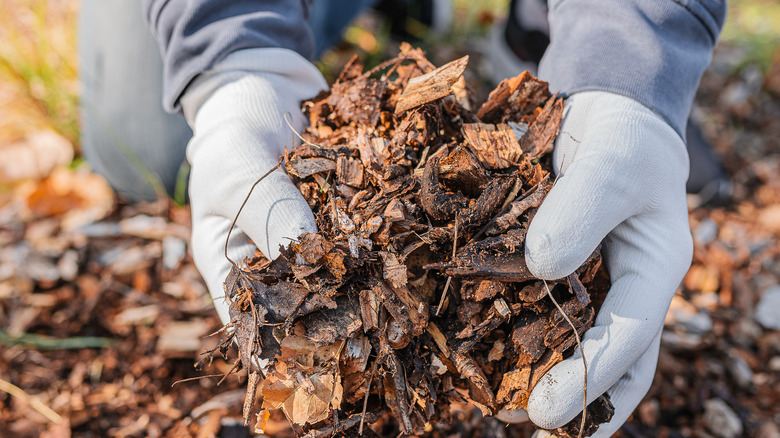
Larisa Stefanuyk/Getty Images
Adding organic matter to your lawn is important in converting it to be more natural while maintaining a lush, green color. Organic matter can be anything that comes from living organisms. This could be plant debris like leaves, stems, petals, and grass clippings, animal waste like cow manure, and kitchen compost. These additions can help your lawn in many different ways.
The first is through improving soil structure. Organic matter can help improve the soil structure of your lawn, making it more porous and allowing water and air to penetrate more easily. This helps promote healthy root growth and makes it easier for your lawn to absorb nutrients. It also increases soil fertility. Organic matter is rich in nutrients such as nitrogen, phosphorus, and potassium, which are essential for plant growth.
This organic matter also enhances soil microbes. Because it’s biodegradable, it’s a food source for soil microbes, which break down organic matter and release nutrients. Finally, organic matter can also help prevent soil erosion by binding soil particles together and improving soil structure. This can be especially important on sloping lawns or areas with heavy rainfall. Overall, it’s a great non-toxic way to convert your lawn to be organic and healthier.
5. Choose to nurture native plants
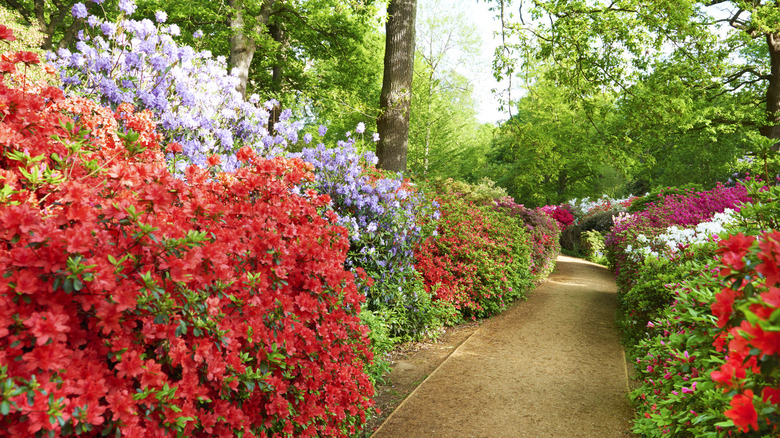
Peter Dazeley/Getty Images
If you convert your lawn to be organic, select plants that would naturally be there instead of ones that just look pretty. This is important because native plants adapt well to the local climate, soil, and ecosystem. Using them can help reduce your lawn’s environmental impact and promote a more sustainable landscape. For example, native plants are often more drought-tolerant and disease-resistant than non-native plants. They require less water, fertilizer, and pesticides to thrive. This can help reduce the amount of maintenance needed for your lawn, making it a more sustainable and eco-friendly choice.
In addition, native plants are an important food source for native pollinators such as bees, butterflies, and birds. Bees are one of the keystone species of many ecosystems, so by supporting their survival, you are also supporting the overall survival of the community. Finally, native plants are also often deep-rooted, which helps improve soil health by promoting better soil structure, water infiltration, and nutrient cycling.
6. Start using more mulch in your lawn
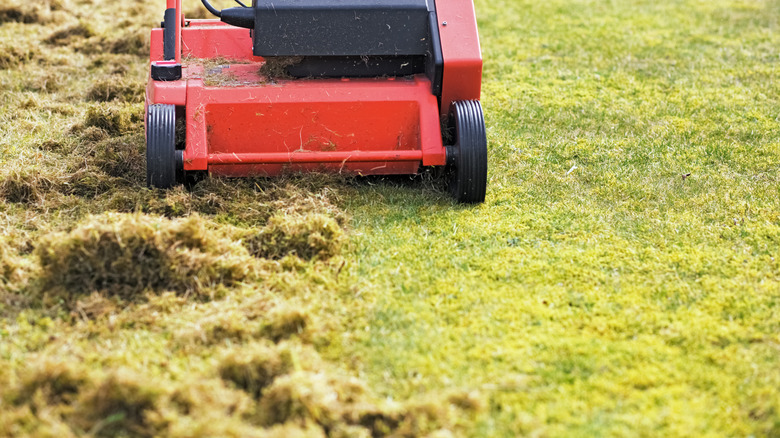
Ingo Bartussek/Shutterstock
Mulch refers to any material spread over the soil surface. The type of mulch used for a lawn may differ from the type of mulch used for flower beds. For lawns, you can use a mulching mower that cuts the grass into smaller pieces and leaves them on the lawn as a natural mulch. You can also use organic mulches such as grass clippings, shredded leaves, or compost on the lawn.
Using mulch in your lawn is an organic practice because it provides a natural way to improve soil health, reduce water usage, and suppress weeds without synthetic chemicals. It reduces overall water usage by helping to retain moisture in the soil by slowing evaporation and reducing soil temperature. It also helps to suppress weed growth by blocking sunlight from reaching weed seeds and preventing them from germinating. This reduces the need for synthetic herbicides and promotes a healthier, more natural lawn.
In addition, if you use more mulch on your lawn, it can increase the overall soil health. This is because mulch slowly decomposes over time, releasing nutrients into the soil and improving soil structure. This, in turn, can help promote healthy root growth, improve water retention, and support a more diverse and healthy ecosystem. However, using too much mulch on a lawn can be detrimental, as it can suffocate the grass and prevent it from growing properly. As a general rule, you should aim to apply no more than 1/2 inch of organic mulch to your entire lawn at a time.
7. Mow high when cutting your grass
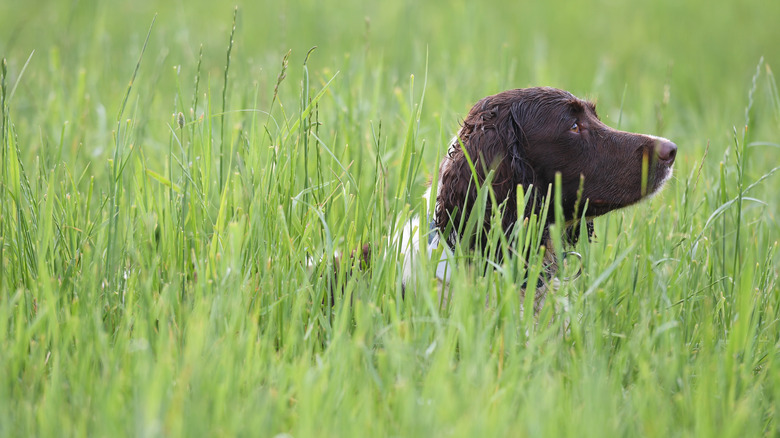
James D. Morgan/Getty Images
When making your lawn more organic, keep the grass at about 3 to 4 inches when you cut it. When you cut your grass too short, you also cut off a significant portion of the plant’s leaves. This can lead to reduced photosynthesis, which in turn can weaken the plant’s roots. Instead, mowing high allows the plant to maintain a healthy amount of foliage, which can help promote stronger root growth. This will occur naturally, without any sort of growth stimulant, which is more organic than methods with high intervention.
In addition, these deeper roots from mowing high can make the plant more drought-tolerant. This is because deeper roots are better able to reach water that is deeper in the soil, even during periods of low rainfall or high temperatures. Keeping your lawn just a bit longer is also helpful in reducing overall weed growth. When your grass is mowed too short, it can create open spaces in your yard that allow weeds to take over. By keeping your grass longer, you’re promoting a denser, more complete lawn that is less likely to have weeds.
8. Compost your food waste and use it in your yard
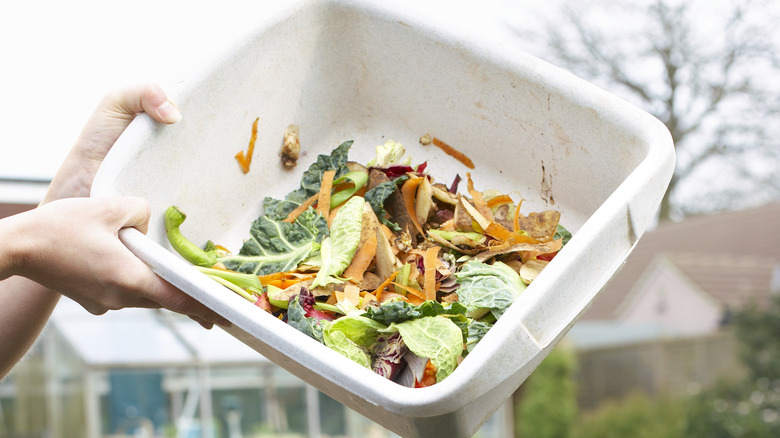
Martin Poole/Getty Images
Composting is a great way to improve your lawn’s health while converting it into being more organic. When you compost, you create a nutrient-rich soil amendment that provides the essential nutrients your yard needs to thrive. This includes nitrogen, phosphorus, and potassium, which promote strong root growth, encourage healthy foliage, and aid in the development of vibrant flowers. It’s also low-cost since you create it using food waste you would otherwise throw away.
Composting also reduces your need for chemical fertilizers since you’re creating a natural version. This is not only better for the environment, but it can also be less expensive than purchasing synthetic fertilizers. Finally, the healthy soil you create using compost can help prevent pest and disease issues in your lawn. It’s a great way to connect your organic eating habits with other areas of your life.
9. Encourage beneficial insects to set up shop
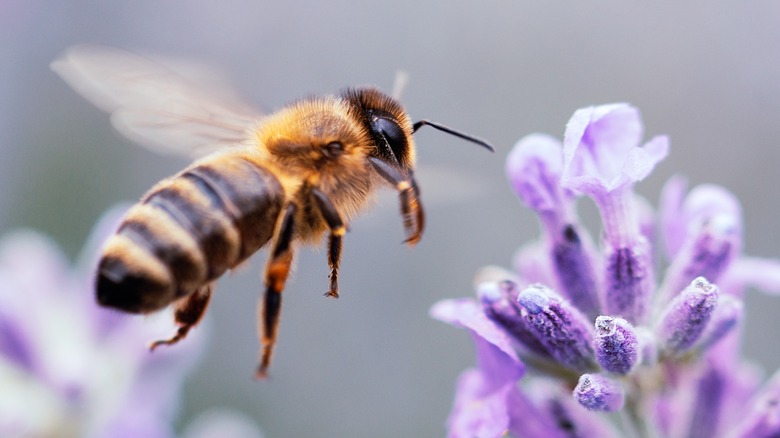
Serenko Natalia/Shutterstock
Having insects in your yard is a natural and organic part of the ecosystem. Insects play an important role in pollination, soil health, and as a food source for birds and other animals. A diverse insect population in your yard can be a sign of a healthy ecosystem. Many insects, such as ladybugs, lacewings, and praying mantises, are actually beneficial to plants and can help control pest populations. These insects are often referred to as “beneficial insects” because they help maintain the ecosystem’s natural balance and reduce the need for chemical pesticides. However, it is important to note that not all insects are beneficial, and some may cause damage to your plants. Pay close attention to the insects in your yard to understand their purpose.
When making your lawn more organic, you must go out of your way to attract these beneficial bugs. Native plants are often the best choice for doing so, as they are adapted to the local climate and provide the correct type of nectar and pollen that attracts them. Many helpful bugs, such as ladybugs and lacewings, need shelter to survive. You can create habitats for these insects by providing nesting sites, such as small piles of sticks or leaves, and sheltered areas like dense shrubs or a small garden shed.
10. Overseed your lawn with a native grass option
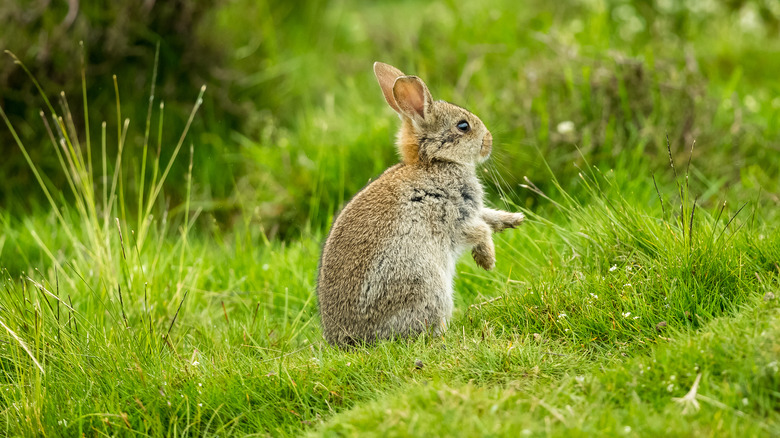
Anne Coatesy/Shutterstock
When converting your lawn to be organic, consider overseeding with a native grass option. This can be beneficial for your lawn in several ways, as native grasses are well adapted to the local climate and soil conditions, which makes them more resilient and easier to maintain. They are also often more resistant to pests and diseases than non-native grasses, as they have evolved alongside natural pest and disease pressures in the local ecosystem. Finally, native grasses are often deeper-rooted than non-native grasses, which helps to improve soil health by increasing water and nutrient uptake and reducing soil erosion.
Native grasses are often more visually appealing than non-native grasses, as they tend to look more natural in the landscape. While St. Augustine grass is very popular in the United States because of its thick blades with rounded edges, it’s non-native and requires a lot of work and water to keep healthy. Depending on your region, the native grasses will vary. Yet Indian Grass, Little Bluestem, Big Bluestem, Purple Love Grass, and Prairie Dropseed are popular native options to start your search with. In early spring, sow just a bit more than the recommended seed amount. This way, if it all doesn’t take hold, you won’t have large bald spots on your lawn when it begins to grow. The transition from an invasive grass to a more organic, native one can be long but worth it.




